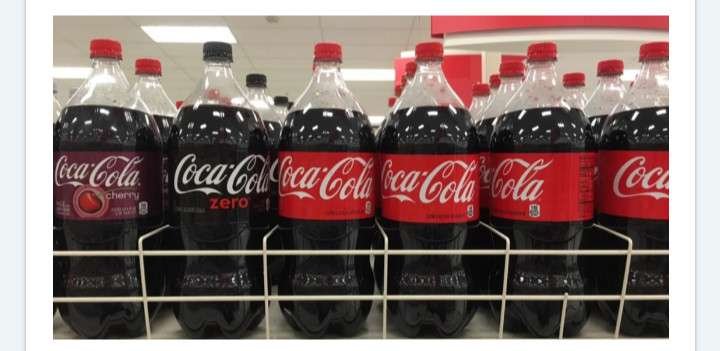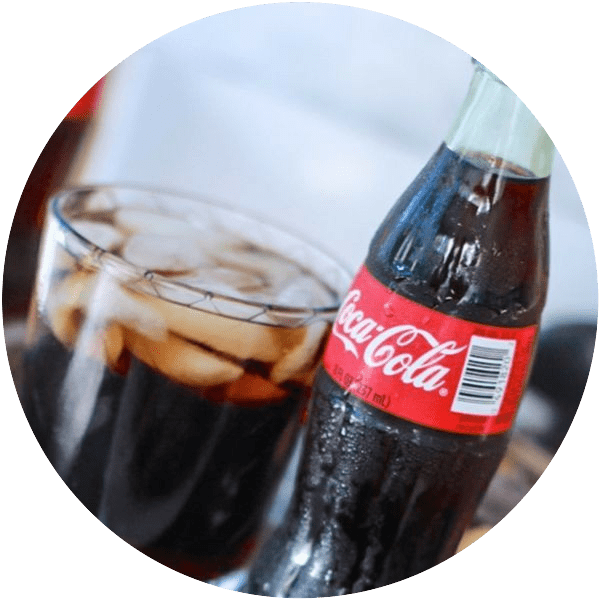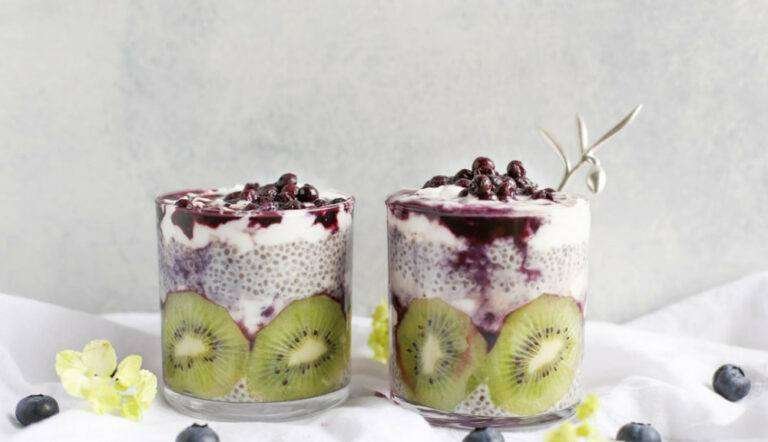Harmful Food Additives in Food – The Good and Bad of Phosphoric Acid

There is nothing better than a sip of ice cool soda pop on a hot summer day. It is one of life’s guilty pleasures that is accessible and affordable. It’s not pina coladas, either. It is Coca Cola, Diet Pepsi, and all dark sodas. These tasty drinks have a secret ingredient. They all have some of the harmful food additives in food and drink called phosphoric acid.?
What is Phosphoric Acid?
Phosphoric acid is a common additive in many processed foods. Manufacturers use it to acidify foods and beverages such as various colas and jams. It enhances the flavor and maintains the freshness of the product. Although phosphoric acid is known for its harmful food additives in food and drinks, it has some benefit to humans.
In its purest form, it is a colorless, odorless crystal extracted from rocks treated with sulfuric acid. It is used in rustproofing metals, fertilizers, detergents, foods, beverages, and water treatment. It has other features such as: 
- Being cheap
- It gives soft drinks a sharper, tangier flavor
- Prevents the growth of molds and bacteria.
- Most of the soda’s acidity comes from phosphoric acid.
What is Phosphorus
Phosphoric acid is made from the mineral phosphorus. This mineral is found naturally in foods. According to the National Institutes of Health, it works with calcium to form strong bones and teeth. It also helps support kidney function and helps the body stores energy.
Phosphorus is the second most plentiful mineral in our body. The first is calcium. Your body needs phosphorus for many functions. For example, it helps your body filter wastes and repairs tissues and cells.
Phosphorus minerals not only cause weight gain, but it also increases the risk of cancer and fatty liver disease. Plus, excessive consumption of sodas containing phosphoric acid causes urinary problems, kidney disease and kidney stones. So, make sure you know how to spot phosphoric ingredients by recognizing it many names.
Other Names for Phosphoric Acid
Don’t be fooled. Read your labels carefully. Watch out for other pseudo names for phosphoric acid such as: 
- e338
- orthophosphoric acid
- phosphoric (V) acid
- o-Phosphoric acid
- triphosphoic acid
- hydrogen phosphate
Become an expert at reading labels and stay ahead of the game. A dip in your phosphoric levels can be a game-changer.
When Phosphorus Levels Drop
Did you know that certain health conditions such as diabetes, alcoholism, and medications (antacids) cause phosphorus levels to drop drastically. Consequently, levels too high or too low cause medical complications such as heart disease, joint pain, and fatigue. However, phosphorus can have guarded positive effects.
The Good News
Phosphorus helps your muscles recover after a hard workout. The phosphorus mineral plays a role in the body’s growth and is needed to produce DNA and RNA, the genetic codes of things. You also need phosphorus to:
- Keep your bones strong and healthy
- Help make energy
- Move your muscles
- Build strong teeth
- Filter out waste in your kidneys
- Balances the use of Vitamin A and D, iodine, magnesium, and zinc.
- Maintain regular heartbeat
On the other hand, always stay vigilant when it comes to the dangers of phosphoric acid. It has extremely unhealthy side effects.
Dangers of Phosphoric Acid
Phosphoric acid is a corrosive chemical. Contact with it irritates and burns the eyes. Plus, breathing in phosphoric acid is an irritant to the nose, throat, and lungs and causes coughing and wheezing. Although it very harmful in certain cases, it is generally recognized as safe (GRAS) by the U.S. Food and Drug Administration. In addition, it is used in foods marketed as organic, vegetarian, halal or kosher. However, this acid is strong enough to be a paint thinner.
Need a Paint Thinner?
Phosphoric acid is not to be taken lightly. For example, do a little research on your own. You will discover that it many uses. For starters, it is used for metal cleaning and refining. In addition, it is a major ingredient in disinfectants, fertilizers, and detergents. As a result, it is at the top of the “strong acid” list. Another recommendation, never ingest any amount of this powerful acidic agent.
Do Not Ingest Phosphoric Acid?
Ingestion of greater than 10% phosphoric acid causes immediate burning of the mouth and throat with abdominal pain, nausea, and vomiting, and is known to melt off the paint from a car. In addition, it is ever present in foods and drinks.
What Foods and Drinks Contain Phosphorus?
When your diet contains enough calcium and protein, you’ll likely have enough phosphorus. That’s because many of the foods high in calcium are also high in phosphorus. 
Foods that are rich in this phosphorus are:
- Meat and poultry
- Fish
- Milk, jams, and other dairy products
- Eggs
- Dark Sodas Contain Phosphoric Acid
Other non-protein food sources that contain phosphorus include:
- Whole grains
- Potatoes
- Garlic
- Dried fruit
- Carbonated drinks (phosphoric acid is used to produce the carbonation).
Be aware of Whole grain breads and cereals. They contain more phosphorus than those made from white flour. Also, phosphorus is found in nuts, seeds, grains, and beans. Consequently, the Western diet is also replete with food additives.
Western Diet is Phosphoric Dense
Phosphoric additives make up 10%-50%of phosphoric intake in the Western diets. One can of soda contains 50 to 60 mg of phosphoric acid. Some flavored waters contain 85 mg per bottle. Better alternatives are:
Parking mineral water:
Gives you carbonation without the phosphoric acid
Kombucha:
You get the bubbles from the natural fermentation along with a powerful punch of probiotics, Vitamin B, and enzymes. By the way you can take your fermentation to the next level. That’s right. Make your own Kombucha. Why not?
Coconut water is another alternative
How Much Phosphorus Do You Need?
The amount of phosphorus depends on your age. Adults need less than children between the age of 9 and 18, but more than children under the age of 8. The recommended dietary allowance (RDA) for phosphorus is as follows: 
- Adults (ages 19 and older): 700 mg
- Children (ages 9 to 18 years): 1,250 mg
- Children (ages 4 to 8 years): 500 mg
- Children (ages 1 to 3 years): 460 mg
- Infants (ages 7 to 12 months): 275 mg
- Infants (ages 0 to 6 months): 100 mg
Safety in Moderation
The recommended daily amount (RDA) of phosphorus for normal bodily functions in adults is 700 mg. You can get this easily from food sources. However, breads, other bakery goods, and highly processed foods contain phosphorus and will give the body more phosphorus than it needs. People who take in more that the recommended daily dose are at risk for negative health effects.
Non-Cola Soft-Drinks
While dark colas, including diet and fruit-flavored varieties, are at the top of the acidity chart and contain harmful PA, non-cola soft drinks cause two-five times the amount of damage. When you check your processed foods and drinks look for phosphoric acid and other phosphorus additives like sodium phosphate in the ingredients list on the package. Consider the checklist below:
- One can of Coke should have around 58 mg x 3.16 = 183 mg of phosphoric acid
- Cola has just as much phosphoric acid as anti-nausea drugs do.
- Coke has 39 grams of sugar
- Cola has a strong, exogenous source of phosphate
- Cola has a high phosphorus content (15-20 mg/dL) more than other carbonated soft drinks
- Phosphorus is more potent (100 times stronger than other acids).
- Citrus and other flavored sodas contain very little or no phosphoric acid – Sprite, Root beer, Lemon-lime, Orange, Grape, Ginger Ale
Symptoms of too Much Phosphoric
- Join pain
- Muscle pain
- Muscle weakness
- Itching and red eyes
- Severe constipation
- Decreased bone density (not good for growing children)
- Chronic kidney problems
- Nausea
- Decreased nutrients
- Increased acidity

According to the USDA nutrient database:
- 1 cup of milk has 247 milligrams of phosphorus
- Condensed milk has as much as 774 mg.
- Tomato and cocktail vegetable juices contain 44-242 mg of phosphorus, respectively.
Some medications can lower your body’s phosphorus levels. Here are a few examples:
- Insulin
- ACE Inhibitors
- Corticosteroids
- Antacids
- Anticonvulsants
If you take these medications, talk to your healthcare provider. He will. Either recommend a dietary make-over or advise you to take phosphorus supplements.
Is Phosphoric Acid Linked to Obesity?
Evidence-based research shows that eating excessive amounts of ultra-processed foods that contain phosphate additives is associated with obesity and metabolic syndrome. According to the School of Public Health Sciences, sugar is at the root of these latest findings.
Supply and Demand of Sugar Sweet Beverages
Sugar-sweetened beverages provide the single, largest source of sugar and energy intake in the U.S. Plus, it is confirmed that all colas containing phosphoric acid are also associated with tumorigenesis, cancer, obesity, and metabolic syndrome.
Read the Labels on Food and Drinks
Bottom line folks, read those labels assiduously. You have control over what you put into your body. Just because soda is cheap and gives you a supposed boost, remember what phosphoric acid does to the paint on a car. Phosphoric acid is nothing to play with. Although this unhealthy preservative is found in ultra-processed foods and drinks, if you consume too much of it wreaks havoc on your external and internal organs.
Final Thoughts
Furthermore, take time to do your research. You will find that phosphoric acid is “generally recognized as safe” (GRAS) when used in accordance with good manufacturing practices. So, after you decide to kick the cola habit, remember that you have a few amazing alternatives. These include Kombucha, coconut water and sparkling water.
Thank you for joining me on another health and wellness journey. Feel free to ask questions, leave a comment or leave feedback. I am always looking for good conversation.
Yours truly.
Rachele, Founder
mybluegenes.com (website)
rachele@mybluegenes.com
(email)






Hey there,
The use of phosphoric acid in food additives is an interesting topic that has been gaining attention in recent years. Phosphoric acid can have both positive and negative effects on the body and needs to be used with caution. On the positive side, the acid can be used to reduce the acidity of food and can help to preserve food for extended periods. Additionally, it can be an important source of phosphorus, a nutrient essential for human health.
On the other hand, phosphoric acid can also be harmful when consumed in large amounts. Studies have shown that it can lead to a decrease in bone density, kidney problems, and other health issues. It is important to be aware of phosphoric acid’s potential risks and use it in moderation. Ultimately, it is up to the individual to decide if the benefits of using it in food additives outweigh the risks.
Keep working!
Marios
Marios,
I sense that you are well-versed on phosphoric acid. I, totally agree that there are health benefits, as well as risks, in terms of this ingredient. This is why it so important to stay informed. Based on your response, I would guess that you are either a medical professional or English professor. Your command of the written language is very impressive. Your generous feedback is highly appreciated.
Rachele
Your point of view caught my eye and was very interesting. Thanks. I have a question for you.
What seems to be the issue?
Your point of view caught my eye and was very interesting. Thanks. I have a question for you.
Binance,
You can leave your questions in the comment section of each post.
Rachele